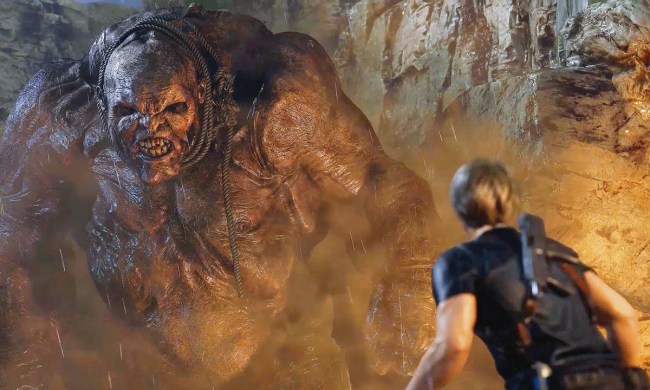Resident Evil 6 was not the game people were hoping for. With a Metacritic score of 67, well below the 86 average for Resident Evil 5 and barely in the same league as the 96 average for Resident Evil 4, critics were obviously less than taken with Capcom’s latest survival horror sequel. A critical failure isn’t always a commercial one, but players were less than pleased when the game released in October. “Sales of the major new title Resident Evil 6 were initially strong, but subsequently weakened,” lamented Capcom in December at a moment when sales should have been surging during the holiday. Now Capcom is doing some soul searching in regards to the future of the series. Fans of the series from before it became focused on co-op action set pieces, will find hope in recent statements from producer Masachika Kawata.
Kawata told Videogamer on Friday that “horror and fear” are the essential elements that Resident Evil games need to focus going forward. In 2012, Kawata said in interviews that Resident Evil needed to become a Call of Duty-style action series to survive in the modern market. “[Especially] for the North American market, we need to keep going in that direction, and take that a step further,” said Kawata.
Resident Evil6 has changed Kawata’s mind, though. “Looking at user feedback from the last couple of games, I’ve started to slightly revise my opinion on that matter,” said the producer. The key according to him is making the existing games scarier. “Take Operation Raccoon City, which was essentially developed as a pure shooter set in the Resident Evil universe. I think there could be potential in taking the base of that game and if we were— hypothetically—to develop a sequel to that, then start bringing back horror into the base that we started with.”
Resident Evil is in need of a change if it’s going to become the sales force that it once was for Capcom. Prior to release, Capcom projected that Resident Evil 6 would sell 7 million copies by the end of the fiscal year in March 2013. Shortly after it released, Capcom boasted that it had shipped 4.5 million copies of the game worldwide. In the company’s October through December quarterly earnings report released on Monday, though, Capcom revealed that Resident Evil 6 sales had “surpassed” 4.8 million copies, only just selling through its initial shipments. “The flagship title Resident Evil 6, despite recording brisk sales when it debuted, subsequently lost its momentum, resulting in the failure to achieve planned sales and fulfill its role as a driver of sales expansion,” reads Capcom’s statement.



